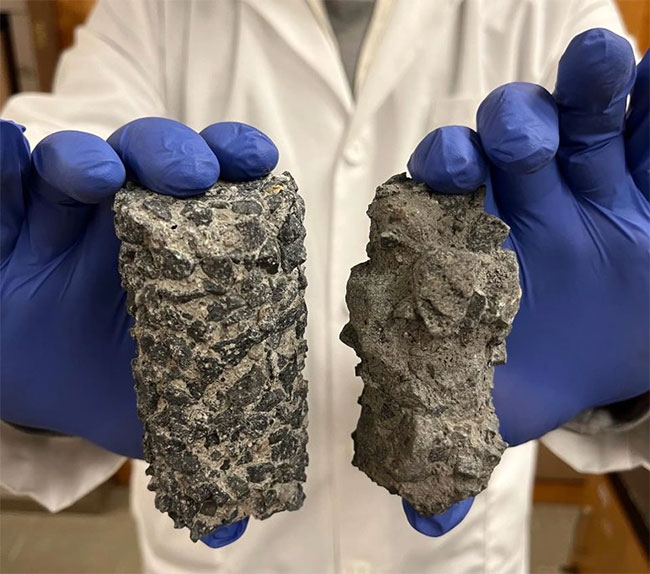The new concrete model has improved 75% in water resistance and 44% in reducing salt corrosion damage compared to commercial versions.
Researchers at Washington State University (USA) have successfully developed a form of “super durable” concrete that withstands moisture and salt exceptionally well—two factors considered the most damaging to this type of material.

Comparison of a concrete sample coated with nano-modified sealant (left) and untreated concrete (Photo: WSU).
According to Xianming Shi, a professor at the Institute of Civil and Environmental Engineering and the lead researcher, concrete—although it appears to be solid rock—essentially resembles a “sponge” when viewed under a microscope. “It is a heterogeneous composite material with high porosity,” emphasized Professor Shi.
In their research, the team added two nano materials: graphene oxide and montmorillonite nanoclay to a sealant made from silicate. They then mixed this blend into the cement to create a durable concrete structure as it hardens.
According to Professor Shi, these nano materials help densify the microstructure of the concrete, making it more difficult for water and fluids to penetrate. They also form a barrier against the infiltration of water vapor and other gases that tend to attack and erode the concrete structure.
The nano materials also protect the concrete from physical and chemical attacks from de-icing salts. The penetrating sealant is designed to be multifunctional, as it can also act as a curing aid for fresh concrete.
Practical studies show that the new concrete sample has improved 75% in water resistance and 44% in reducing salt corrosion damage compared to commercial versions.
It is known that a large portion of the nation’s critical infrastructure, such as the U.S. highway system, was built from the 1950s to the 1970s and is now reaching the end of its designed lifespan.
Statistics indicate that every four years since the late 1990s, the American Society of Civil Engineers has provided a report on the nation’s infrastructure, consistently showing poor or failing grades. Specifically, about 8% of the approximately 600,000 bridges in the U.S. are considered structurally deficient, and for every 5 miles (approximately 8 km) of highway, there is one bridge in poor condition.
The problem is exacerbated in colder climates due to many freeze-thaw cycles, as well as the increasing use of de-icing salts in recent decades, which can degrade concrete structures.
The new research could be seen as an effective supplementary measure to address the challenges of aging bridges and roadways in the U.S. and many other countries worldwide.
Currently, Professor Shi and researcher Zhipeng Li have published their findings in the Journal of Materials in Civil Engineering and have filed for a provisional patent.


















































